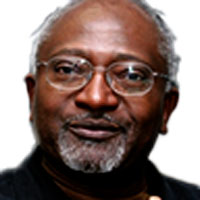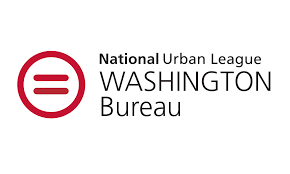Environmental justice embraces the principle that all people and communities are entitled to equal protection of environmental, health, employment, education, housing, transportation, energy, and civil rights laws. This principle was largely absent from the first Earth Day on April 22, 1970 where the modern environmental movement was born. Environmental justice languished during the “Dark Ages” of the 1970s and early 1980s.
The dominant view of “environmental protection for all” only began to change when Black people decided to wage a frontal assault on environmental racism and began demanding environmental protection as a basic civil right.
In 1979, Black Houstonians confronted environmental racism head-on with demonstrations, protests, land legal action in Bean v. Southwestern Waste Management Corp., the first lawsuit in the nation to challenge the siting of a solid waste facility using civil rights law, and research, Solid Waste Sites and the Houston Black Community.2
In 1982, environmental justice as a civil right was catapulted into the national limelight in the rural and mostly Black Warren County, North Carolina—over dumping toxic waste at a landfill located in the Black community. The landfill ignited protests led by Reverend Benjamin.
F. Chavis prompted the United Church of Christ Commission for Racial Justice, a faith-based Black civil rights organization, to produce its landmark 1987 Toxic Wasted and Race in the United States report, the first national study to correlate waste facility sites and demographic characteristics.3
In 1990, Dumping in Dixie: Race, Class and Environmental Quality became the first environmental justice textbook to show environmental vulnerability mapped closely with Jim Crow segregation, racial redlining and discriminatory zoning and land use practices. A steady stream of empirical research and studies followed—documenting what most residents in environmentally impacted communities already knew—poor people and people of color were getting dumped on and poisoned in their homes, neighborhoods, jobs, schools, parks, and playgrounds.4
America is segregated, and so is pollution.5 In 46 states, people of color live with more air pollution than whites. African Americans are exposed to 1.54 times more fine particulate matter than whites. Hispanics are exposed to 1.2 times.6 Residents in racially segregated neighborhoods breathe in air that’s three times more toxic than residents living in communities with a low degree of racial housing segregation.7 People of color households breathe in more pollution than they cause.8 Black Americans and Latinos breathe in 56 percent and 63 percent, respectively, more pollution than they cause—while White Americans breathe 17 percent less air pollution than they cause.
Climate change will exacerbate existing environmental and economic disparities and vulnerabilities—creating growing challenges to human health, quality of life, and economic stability.9 Climate impacts will fall disproportionately on people of color communities who are least able to prepare for and recover from heat waves, poor air quality, flooding, and other impacts.10 Climate change is expected to increase the number of “bad air” days and increase heat stress and heat-related deaths.11 Extreme heat resulted in 12,000 deaths in the U.S. each year between 2010 and 2020 and is predicted to reach an annual toll as high as 97,000 by 2100.12 Heat and pollution can create bad pregnancy outcomes. Black mothers and their babies are harmed at a much higher rate than White mothers and their babies.13
Climate change is expected to quadruple outdoor workers’ exposure to dangerous heat from now through 2065. Outdoor workers are up to 35 times more likely to die from exposure to extreme heat than the general population.14 People of color are disproportionately represented in the outdoor workforce. Hot days could result in a 10% drop in earnings for 4 million outdoor workers or a $39 billion total.
Our most vulnerable population lives across the fence from “dirty energy,” coal plants, oil refineries, and petrochemical facilities—major emitters of greenhouse gases as well and other harmful co-pollutants. Half of the people who are at an increased cancer risk from refineries’ pollution are people of color.15 In 2021, 13 U.S. refineries emitted dangerous benzene pollution that exceeded the EPA’s “action level.” More than 330,000 people live within three miles of these refineries, of which 57 percent are people of color, and 43 percent live below the poverty line.16
Redlined urban neighborhoods have nearly twice the density of oil and gas wells as non-redlined neighborhoods.17 Similarly, natural gas leaks are more prevalent in neighborhoods with low-income or majority people of color residents.18 Although Black residents are overrepresented in communities with oil and gas facilities, they are underrepresented in the oil and gas workforce. Only 9% of the oil and gas jobs were held by Black Americans receiving 23% lower pay rates compared to the Whites in the industry.19
Similarly, the clean energy sector also has a “diversity problem.” Black Americans make up 13% of both the U.S. population and labor force but hold just 10% of all energy jobs and 8% of jobs in renewable energy generation and fuels, energy efficiency, grid modernization, clean vehicle manufacturing, and similar industries.20 A just transition to clean energy will help close the income and wealth gap as well as help alleviate energy poverty and energy insecurity in Black and Latino neighborhoods whose residents pay more for energy despite far lower emissions.21
Frontline communities are making their voices heard and are demanding the Biden Administration design and implement the right kind of programs with transparent application processes and screening and tracking tools that ensure Justice40 benefits (a plan to deliver 40% of the overall benefits of climate investments to disadvantaged communities), $1.2 trillion Bipartisan Infrastructure Laws and the $369 billion climate change provisions in the Inflations Reduction Act (IRA) flow to meet the needs of disadvantaged communities and their organizations, institutions, and businesses.
It is imperative that cross-sector interdisciplinary environmental, climate, and energy justice planning is funded directly to support organizations, networks and community capacity building and technical support to effectively and efficiently access the billions of federal dollars and state resources currently available to help transitions to a low-carbon clean energy economy. This clean energy transition must lift up justice, fairness, and equity and make the millions of good paying jobs and businesses accessible to Black and Latino workers and owners.
The historic federal funds that are available for environmental, climate and energy justice, if used properly, can begin closing the racial income and wealth gap. The $27 billion Greenhouse Gas Reduction Fund (GGRF), a provision within the IRA, is an opportunity to leverage private capital for clean energy and clean air investments to reduce pollution, improve public health, lower energy costs, increase energy security, create good- paying jobs and boost economic prosperity in underserved communities. The GGRF needs to support millions of low-income and working families that need it the most. To ensure the funding and benefits reach the target population and communities, priorities need to be given to projects that work with existing local financial institutions, networks, HBCU Consortia, Justice40 Hubs, and other trusted institutions embedded in disadvantaged communities. The time for bold action is now.
ENDNOTES
1 R.D. Bullard, The Quest for Environmental Justice: Human Rights and the Politics of Pollution. San Francisco: Sierra Club Books, 2005.
2Bean v. Southwestern Waste Management Corp. 42 F. Supp. 673 (S.D. Tex. 1979); See R.D. Bullard, “Solid Waste Sites and the Houston Black Community,” Sociological Inquiry 53, 2-3 (April 1983): 273-288; R.D. Bullard, Invisible Houston: The Black Experience in Boom and Bust. College Station, TX: Texas A&M University Press, 1987.
3 United Church of Christ, Toxic Wastes and Race in the United States. New York: Commission for Racial Justice, 1987.
4 R.D. Bullard, Dumping in Dixie: Race, Class and Environmental Quality: Boulder, CO: Westview Press, 1990. 5R.D. Bullard, Unequal Protection: Environmental Protection and Communities of Color. San Francisco: Sierra Club Books, 1994.
6 Mikati, I., A.F. Benson, T.J. Luben, J.D. Sacks and J. Richmond-Bryant. “Disparities in Distribution of Particulate Matter Emission Sources by Race and Poverty States,” AM J Public Health. 2018 April; 108(4): 480–485. Published online 2018 April. doi: 10.2105/AJPH.2017.304297
7 Kodros, J.K., M.L. Bell, F. Dominici, et al. “Unequal Airborne Exposure to Toxic Metals Associated with Race, Ethnicity, and Segregation in the USA.” Nat Commun 13, 6329 (2022). https://doi.org/10.1038/s41467-022-33372-z 8 See Tessum, C. W., et al. “U.S. Black and Hispanic Minorities Bear Disproportionate Buren for Air Pollution,” Proceedings he National Academy of Sciences, March 11, 2019; DOI: 10.1073/pnas.1818859116.
9 U.S. Global Change Research Program, Fourth National Climate Assessment: Impacts, Risks and Adaptation in the United States, Volume II, (2018) https://nca2018.globalchange.gov/;
10 Environmental Protection Agency. 2021. Climate Change and Social Vulnerability in the United States: A Focus on Six Impacts. U.S. Environmental Protection Agency, EPA 430-R-21-003. https://www.epa.gov/system/files/documents/2021-09/climate-vulnerability_september-2021_508.pdf
11 Nadia Popovich and Adam Pearce, It’s Not Your Imagination: Summers are Getting Hotter. The New York Times July 28, 2017. https://www.nytimes.com/interactive/2017/07/28/climate/more-frequent-extreme-summer- heat.html?_r=0; Keith Breen, Too Hot to Work? What Climate Change Means to Jobs. World Economic Forum Agenda. (July 20, 2016). https://www.weforum.org/agenda/2016/07/too-hot-to-work-what-climate-change-means- for-the-economy/; B. Plumer and N. Popovich, “How Decades of Racist Housing Policy Left Neighborhoods Sweltering,” The New York Times, August 24, 2020, https://www.nytimes.com/interactive/2020/08/24/climate/racism-redlining-cities-global-warming.html
12 Shindell, D., Y. Zhang, M. Scott M. Ru. K. Stark, and K. Ebi, The Effects of Heat on Human Mortality Throughought the United States, GeoHealth2020 Apr. 4(4) e2019GH000234 doi: 10.1029/2019GH000234. Abualsaud, R. et al. 2019. Ethnicity-Based Inequality in Heat-Related Illness Is on the Rise in California. Letters to the Editor, Vol.30, Issue 1, P100—103, March.
13 Shindell, B, S. Pacheco, R. Basu, and N. DeNicola. “Association of Air Pollution and Heat Exposure with Preterm Birth, Low Birth Weight, and Stillbirth in the US: A Systematic Review”. JAMA Netw Open. 2020 Jun 1;3(6):e208243. doi: 10.1001/jamanetworkopen.2020.8243. Erratum in: JAMA Netw Open. 2020 Jul 1;3(7):e2014510. PMID: 32556259; PMCID: PMC7303808.
14 Union of Concerned Scientists. 2021 Annual Report. Washington, D.C. https://www.ucsusa.org/sites/default/files/2021-11/2021_Annual_Report.pdf
15 Garcia, L. 2014. “Communities Near Oil Refineries Must Demand Cleaner Air. Huffpost, Oct. 8 https://www.huffpost.com/entry/communities-near-oil-refi_b_5662559
16 Environmental Integrity Project. 2021. 13 Oil Refineries in U.S. Released Cancer-Causing Benzene Above EPA Action Levels in 2020. April 28. https://environmentalintegrity.org/news/13-oil-refineries-in-u-s-released-cancer- causing-benzene-above-epa-action-levels-in-2020/
17 Gonzalez, D. J.X., A. Nardone, A.V. Nguyen, R. Morello-Frosch, and J.A. Casey, “Historic Redlining and the Siting of Oil and Gas Wells in the United States.” J Expo Sci Environ Epidemiol 33, 76–83 (2023).
18 Weller Z.D., S. Im, S. Palacios, and V. E. Stuchiner, J.C. von Fischer, “Environmental Injustices of Leaks from Urban Natural Gas Distribution Systems: Patterns among and within 13 U.S. Metro Areas.” Environ Sci Technol. 2022 Jun 21;56(12):8599-8609. doi: 10.1021/acs.est.2c00097. Epub 2022 May 11. PMID: 35544760; PMCID: PMC9228055.
19 Alan Neuhauser, “Oil Boom a Bust for Blacks,” U.S. New & World Report, August 24, 2018. https://www.usnews.com/news/the-report/articles/2018-08-24/african-americans-shut-out-from-the-us-oil-boom
20 Karin Rives, “Groups Claim America’s Clean Energy Sector Has a Diversity Problem.” S& P Global, September 10, 2021. https://www.spglobal.com/marketintelligence/en/news-insights/latest-news-headlines/groups-claim- america-s-clean-energy-sector-has-a-diversity-problem-66537369.
21 Goldstein, B., T.R. Reames, and J.P. Newell, “Racial Inequity in Household Energy Efficiency and Carbon Emissions in the United States: An Emissions Paradox.” 2022. Energy, Research and Social Science, Vol. 8



